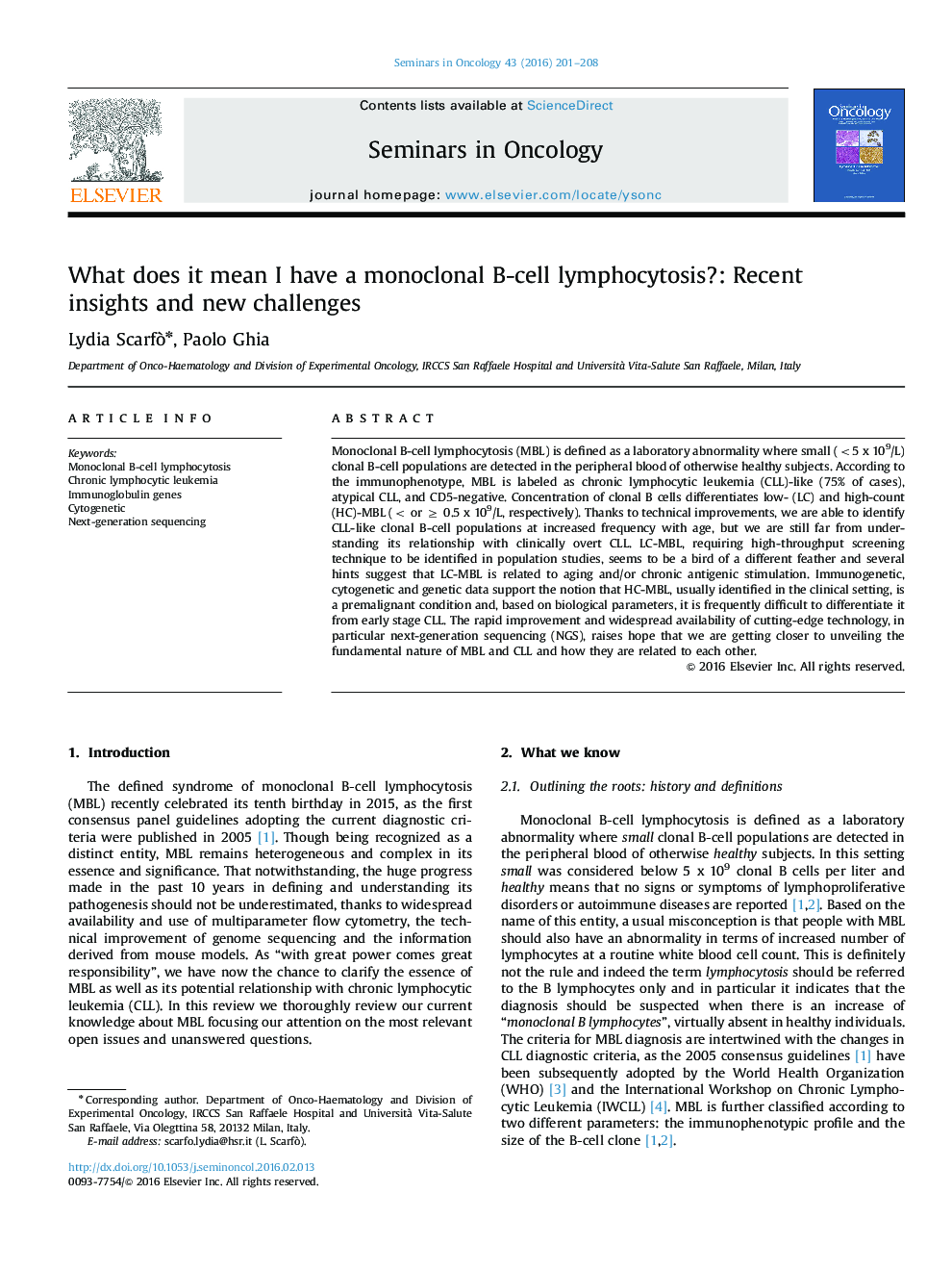| کد مقاله | کد نشریه | سال انتشار | مقاله انگلیسی | نسخه تمام متن |
|---|---|---|---|---|
| 2161743 | 1091206 | 2016 | 8 صفحه PDF | دانلود رایگان |
عنوان انگلیسی مقاله ISI
What does it mean I have a monoclonal B-cell lymphocytosis?: Recent insights and new challenges
دانلود مقاله + سفارش ترجمه
دانلود مقاله ISI انگلیسی
رایگان برای ایرانیان
کلمات کلیدی
موضوعات مرتبط
علوم زیستی و بیوفناوری
بیوشیمی، ژنتیک و زیست شناسی مولکولی
تحقیقات سرطان
پیش نمایش صفحه اول مقاله

چکیده انگلیسی
Monoclonal B-cell lymphocytosis (MBL) is defined as a laboratory abnormality where small (<5 x 109/L) clonal B-cell populations are detected in the peripheral blood of otherwise healthy subjects. According to the immunophenotype, MBL is labeled as chronic lymphocytic leukemia (CLL)-like (75% of cases), atypical CLL, and CD5-negative. Concentration of clonal B cells differentiates low- (LC) and high-count (HC)-MBL (< or ⥠0.5 x 109/L, respectively). Thanks to technical improvements, we are able to identify CLL-like clonal B-cell populations at increased frequency with age, but we are still far from understanding its relationship with clinically overt CLL. LC-MBL, requiring high-throughput screening technique to be identified in population studies, seems to be a bird of a different feather and several hints suggest that LC-MBL is related to aging and/or chronic antigenic stimulation. Immunogenetic, cytogenetic and genetic data support the notion that HC-MBL, usually identified in the clinical setting, is a premalignant condition and, based on biological parameters, it is frequently difficult to differentiate it from early stage CLL. The rapid improvement and widespread availability of cutting-edge technology, in particular next-generation sequencing (NGS), raises hope that we are getting closer to unveiling the fundamental nature of MBL and CLL and how they are related to each other.
ناشر
Database: Elsevier - ScienceDirect (ساینس دایرکت)
Journal: Seminars in Oncology - Volume 43, Issue 2, April 2016, Pages 201-208
Journal: Seminars in Oncology - Volume 43, Issue 2, April 2016, Pages 201-208
نویسندگان
Lydia Scarfò, Paolo Ghia,